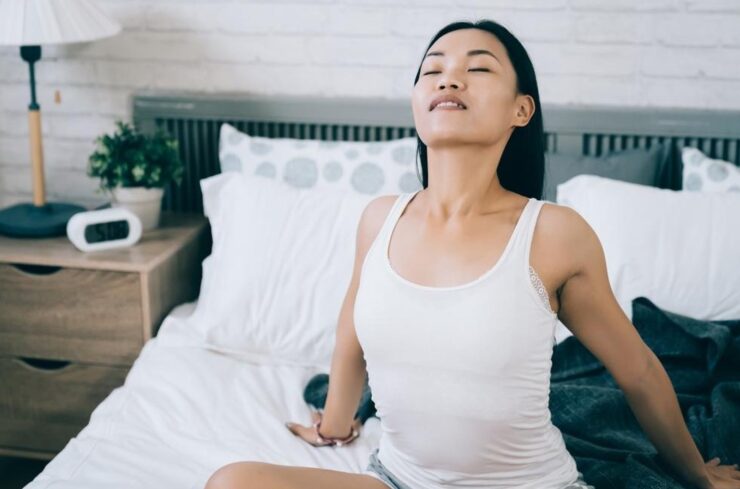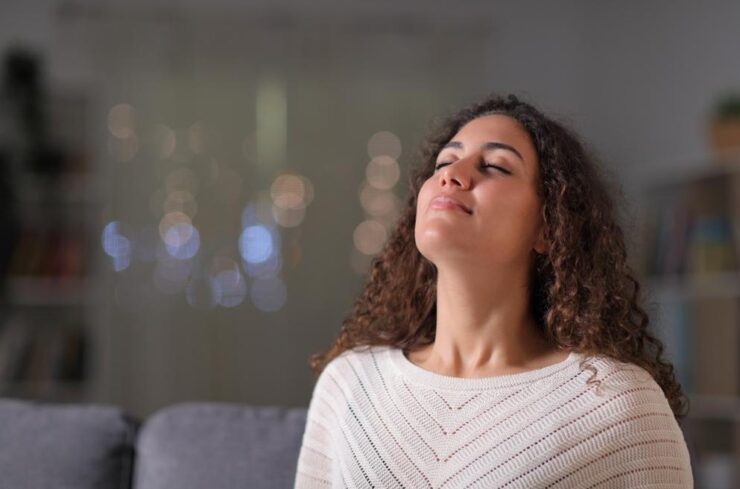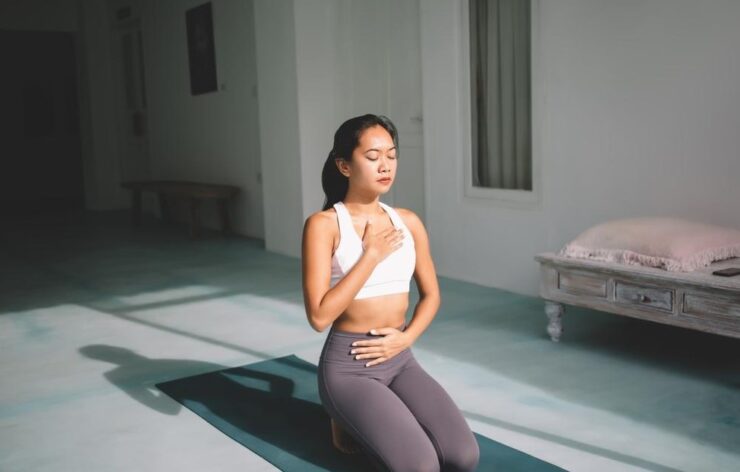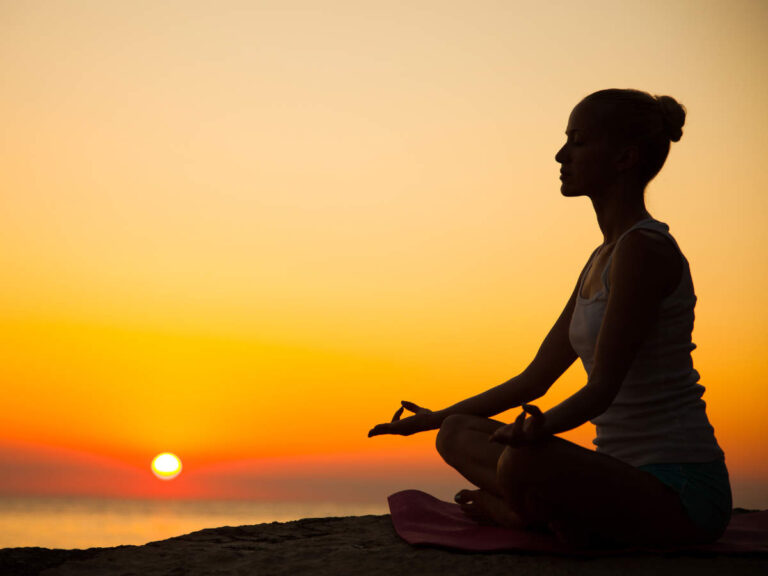Getting a good night’s sleep is essential to maintain a healthy lifestyle. Although many strategies can help promote better sleep, such as avoiding screens right before bed, sleeping with a cooling weighted blanket and reducing caffeine during the day, controlled breathing techniques have been scientifically proven to help you relax and get to sleep faster.
Controlled breathing helps slow down your heart rate and oxygen intake, which puts your body in a more relaxed state, ready for sleep. It aids in releasing endorphins and other hormones associated with relaxation. Moreover, taking some deep breaths when nearing the point of sleep has been known to help reduce anxiety or stress-related thoughts that could provide an obstacle to falling asleep quickly. These techniques will help you wind down regularly and get the restful sleep you need.

1. Diaphragmatic Breathing
Diaphragmatic breathing, also known as belly breathing, is a type of deep breathing that helps to engage the diaphragm. The diaphragm is a muscle that separates the chest from the abdomen and is the primary muscle used for breathing. When the diaphragm contracts, it moves downward and causes the lungs to expand, which allows air to enter.
How to do it – Start by lying comfortably on your back and placing one hand on your chest and the other on your belly. Next, take deep breaths from your nose, letting the air move into your abdomen instead of letting it stay in the chest. Focus on pushing out your belly rather than expanding your chest as you breathe in. You can experiment with the length of your inhalations and exhalations, but aim for a steady rhythm.
2. Four-Seven-Eight Breathing
Four-seven-eight breathing, also known as the relaxation response, is a type of deep breathing that helps to slow down the heart rate and lower blood pressure. This one is all about the breath pattern and can be done on its own or incorporated as part of other techniques.
How to do it – Start by sitting or lying in a comfortable position. Begin by breathing deeply through your nose for a count of four, then hold your breath for seven seconds and exhale slowly through your mouth for eight seconds. Repeat this pattern for several minutes. You should start to feel relaxed after a few rounds of this exercise, but take it slowly and don’t rush the process.

3. Alternate Nostril Breathing
Alternate nostril breathing is a type of pranayama, a form of yoga focusing on breath control. This exercise helps to improve respiratory function and can be used as a relaxation technique.
How to do it – To do this exercise, simply hold your right hand in front of your face and use your thumb and index finger to close off your right nostril. Next, breathe in through your left nostril and then close off your left nostril with your ring finger and pinky finger while you breathe out through your right nostril. Repeat this process for several minutes.
4. Lion’s Breath
Lion’s breath is a type of pranayama that helps to improve respiratory function and can be used as a relaxation technique as it helps relieve stress. This exercise is even said to help improve digestion. It works well as part of a nighttime routine before actually getting into bed.
How to do it – Sit on the floor with your spine straight and place your hands on your knees. Take a deep breath in through your nose and then exhale forcefully through your mouth while sticking out your tongue and making an “ah” sound. Then, follow this with normal breathing and repeat this process for several minutes. Depending on what feels most comfortable, you can vary this method by directing your gaze downward, forward or upward.
5. Box Breathing
Also called “square breathing,” this exercise is all about keeping things even to promote a sense of balance and relaxation. This one is excellent to do right before bed as it helps to slow down the heart rate, lower blood pressure and relax the body and mind.
How to do it – Start by sitting in a comfy position with your eyes closed. Next, breathe in deeply for a count of four and then hold your breath for a count of four. Then, slowly exhale for a count of four and, again, hold your breath for a count of four. Keep repeating this cycle of four for several minutes, keeping an even breathing rate. You can use different numbers to time your breathing, but four is the most common.
6. Pursed-Lip Breathing
Pursed-lip breathing is a type of deep breathing that helps to slow down the rate of respiration. This happens because when you purse your lips, the air is trapped in your lungs longer and then released gradually. This technique helps to strengthen the muscles used for breathing and can help to reduce shortness of breath and ease anxiety.
How to do it – Begin by taking a deep breath through your nose for a count of two. Then, purse your lips as if you’re about to whistle. Next, slowly exhale the air through your pursed lips, ensuring you’re pushing all the air out of your lungs. This is usually done to a count of four. Repeat this process and focus on extending the breath for a few seconds longer than you did on the inhale. Continue this pattern for several minutes until your breathing is under control.

Final Thoughts on Deep Breathing Exercises
Deep breathing exercises are a simple but powerful way to reduce stress and anxiety, improve your respiratory health and promote relaxation, which will lead to better sleep quality.
Make sure you start off slowly and give yourself time to get used to the different techniques before trying something more advanced. And remember that practice makes perfect — so slip on that weighted eye mask and keep at it. With consistency, you’ll soon reap the full benefits of deep breathing exercises. Happy breathing!

